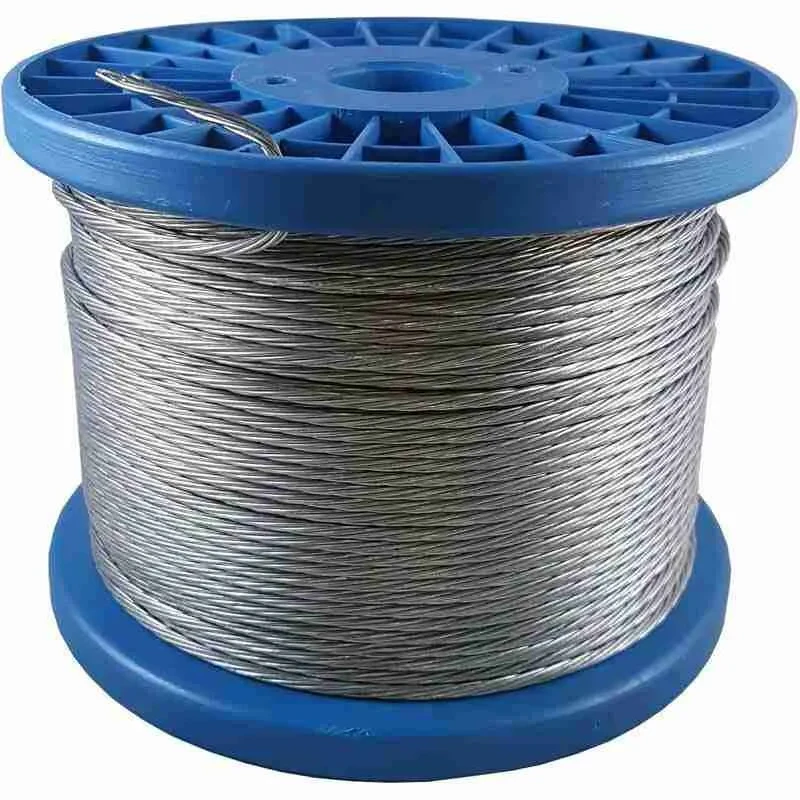
Stay Wire
Understanding Stay Wires: The Silent Guardians of Tall Structures
When you look at power poles, communication towers, or even some tall signs along roads, you might notice cables running from the top of the structure to the ground. These cables are called stay wires, and while they might not be as noticeable as the structures themselves, they play a crucial role in ensuring these tall systems remain stable and secure. In this blog, we’ll take a deep dive into what stay wires are, why they’re necessary, and how they help keep our infrastructure safe.
What Are Stay Wires?
A stay wire is a type of tensioned cable or wire used to provide additional support to vertical structures. These wires are typically anchored at a certain point on the structure and extend downward, anchored to the ground at a distance. By exerting a pulling force on the structure, stay wires counterbalance the forces acting on it, such as wind or the weight of the structure itself, and help keep the structure upright.
Stay wires can be found in various places where stability is essential, including telecommunication towers, electricity poles, flagpoles, and signposts. Essentially, if there’s a tall structure that might be subject to environmental forces or its own weight, stay wires are there to provide that extra stability.
Why Are Stay Wires Important?
The primary function of a stay wire is to ensure the stability of tall structures. Let’s explore why they’re so crucial:
-
Prevents Tipping or Falling: Without proper support, tall structures are prone to swaying or tipping over. This is especially true when external forces, like wind or storms, are at play. Stay wires prevent the structures from losing their balance and toppling.
-
Mitigates Wind Pressure: Tall structures can experience a lot of lateral force due to wind. Stay wires help absorb some of that wind pressure, reducing the risk of structural failure.
-
Adds to Structural Integrity: In the case of electricity poles or telecommunication towers, these wires help maintain alignment and prevent the structure from bending or warping over time due to internal stress or weight.
-
Cost-Effective Solution: Adding stay wires to a structure can be more cost-effective than building taller, more robust foundations. They provide necessary support while using relatively simple materials.
How Do Stay Wires Work?
To understand how stay wires work, we need to think about tension. When the stay wire is anchored at a certain angle, it creates tension that pulls on the top of the structure. This tension helps resist any forces that may want to pull the structure off-balance. The tension in the wire balances out wind forces, weight, and even the natural sway of the structure, keeping it in a stable position.
For example, a telephone pole might be leaning slightly in one direction due to wind. The stay wire on the opposite side of the pole will exert force that pulls the pole back into its correct, upright position.
Types of Stay Wires
While the basic function remains the same, stay wires come in different types depending on their application. Some of the common types include:
-
Single Stay Wires: A single wire stretched from the top of the structure to the ground at an angle, commonly used in simpler structures like telephone poles.
-
Multiple Stay Wires: Some structures, especially large transmission towers, use multiple stay wires arranged in different directions to provide extra stability.
-
Stay Cables: In more advanced settings like high-rise towers or cable-stayed bridges, cables (often made of steel or high-strength materials) are used as stay wires to provide greater strength and support.
Where Are Stay Wires Used?
Stay wires are used in a wide variety of situations where tall structures need reinforcement. Here are some common uses:
- Telecommunication Towers: These towers can be several hundred feet tall, and stay wires prevent them from swaying in the wind or collapsing.
- Power Poles: Electrical poles often use stay wires to ensure they remain upright despite strong winds or heavy electrical lines.
- Flags and Signposts: Large flags or signs may also require stay wires to keep them from falling over.
- Transmission Towers: High-voltage power transmission towers use stay wires to manage the load and prevent structural collapse under the weight of the lines or external forces.
Stay wires may not be the most glamorous part of our infrastructure, but they’re essential for maintaining the stability and safety of a wide range of structures. Without them, the towering power lines, communication towers, and other large structures we depend on could easily be damaged or fall during storms or heavy winds. By providing that extra support and tension, stay wires help ensure that our communities stay connected and safe, one wire at a time.
The next time you see a tall pole or tower, take a moment to appreciate the role of those seemingly simple stay wires — they’re working silently in the background, keeping everything in place.
651
0
734
172
